Citizen Watch Co. is one of Japan’s most storied watchmakers, renowned for its blend of traditional craftsmanship and cutting-edge technology. The company traces its roots to 1918, when entrepreneur Kamekichi Yamazaki founded the Shokosha Watch Research Institute in Tokyo. By 1924, Shokosha had produced its first pocket watch, which was named “CITIZEN” at the urging of Tokyo’s mayor, Count Gotō Shinpei – a name chosen with the idea that the watches would be “loved by the citizens for a long time”. In 1930, Shokosha merged with a Swiss partner (Rodolphe Schmid’s company) under new president Yosaburo Nakajima, officially forming Citizen Watch Co. Ltd. From its inception, Citizen set out to become a true manufacture, making its own parts and movements in-house – a vertically integrated approach that underpins the brand to this day. Its current global motto, “Better Starts Now,” reflects the company’s ethos of constant improvement, a guiding principle since its founding in 1918.
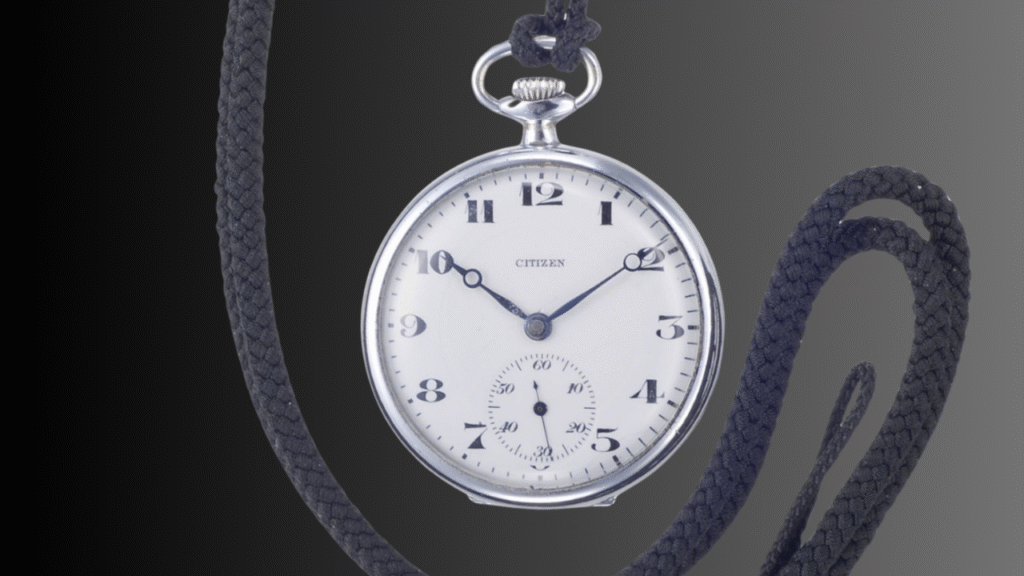
- 1918 – Shokosha Watch Research Institute founded by Kamekichi Yamazaki, aiming to mass-produce timepieces in Japan.
- 1924 – First “CITIZEN” pocket watch released. The brand name (suggested by Yamazaki’s friend Count Goto Shinpei) symbolizes a watch for the common citizen.
- 1930 – Citizen Watch Co. established. Shokosha (Japan) and Schmid (Swiss) merged to form Citizen, with Nakajima as president.
- 1931 – First Citizen wristwatch (Model F) introduced. Citizen’s first men’s wristwatch rolled out, marking the start of its consumer watch line.
- 1949 – Post-WWII rebirth with the “New Citizen” center-seconds watch, Japan’s first domestically-produced central-second watch.
- 1959 – Miyota factory opened. Citizen founded Miyota as a movement manufacturing arm, which would grow to be the world’s largest watch movement maker by the mid-1980s.
Postwar Growth and Diversification (1930s–1960s)
In the decades following World War II, Citizen expanded rapidly. The company invested in precision machinery (e.g. pioneering automatic lathes in the 1930s and 1950s) and broadened beyond watches into calculators, machine tools, and other electronics. By the 1950s, Citizen was exporting watches internationally and introducing new features: for example, in 1952 the Citizen Calendar became Japan’s first wristwatch with a complete calendar display. Citizen also achieved several national firsts: the “Parashock” anti-shock mechanism (1956) and Parawater (1959), Japan’s first fully water-resistant wristwatch. By 1961 Citizen began exporting machinery and components worldwide.
Key technological advances of this era included: the Citizen Jet automatic (1961), the slimmest self-winding watch in Japan; the first Japanese “Chronometer” certified high-accuracy watch (1962); and the Citizen X8 Cosmotron (1966), Japan’s first electronic (tuning-fork) watch that ran for one year on a battery. Citizen’s 1960s innovations signaled its shift toward electronic timekeeping that would define its later years.
Quartz Revolution and Digital Age (1970s–1990s)
The 1970s brought a global quartz revolution, and Citizen was at the forefront. In 1973 Citizen introduced its first quartz wristwatch, and in 1974 released Quartz Liquid Crystal, Japan’s first digital quartz watch for men. Citizen also explored combination analog-digital designs (the Digi-Ana) and the first women’s digital LCD (Crystron LC, 1975). Notably, in 1975 Citizen unveiled the Crystron Mega – the world’s first high-precision quartz accurate to ±3 seconds per year, beating far ahead of typical quartz accuracy (~±3 minutes/year).
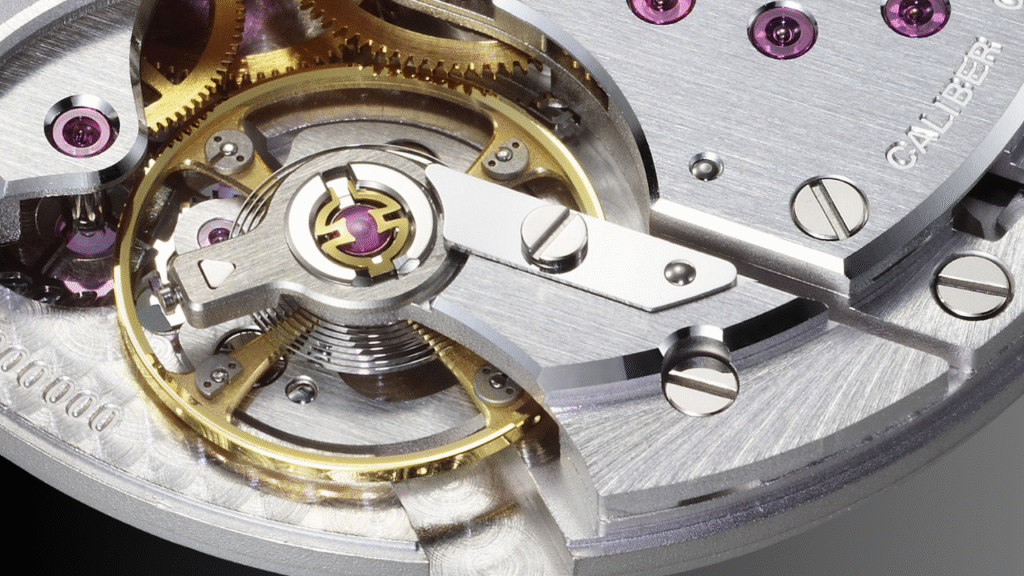
Another major landmark was solar power. In 1976 Citizen introduced the Crystron Solar Cell, the world’s first analog quartz wristwatch powered by a rechargeable solar battery. While this initial model had limited indoor charging capacity, it paved the way for what would become Citizen’s signature Eco-Drive system. By 1995 Citizen perfected Eco-Drive technology (with a new lithium-ion rechargeable cell), enabling watches that run indefinitely on any light source and eliminate the need for disposable batteries. (Citizen estimated that by 2007 Eco-Drive had prevented over 10 million watch batteries from ending up in landfills in North America alone.)
Citizen’s era of time-signal synchronization began in this period as well. In 1993 it released the world’s first multi-band radio-controlled watch (Promaster RC) which synchronized to atomic clock signals. These “atomic” watches could automatically adjust time, achieving staggering long-term accuracy. By 2003, Citizen’s Skyhawk A-T introduced full multi-band radio sync plus a suite of pilot functions – maintaining accuracy of ~1 second per 100,000 years.
Notable models and milestones: Alongside technological breakthroughs, Citizen cultivated enduring model lines. The Promaster collection (launched 1989) grew to include divers, pilots, and sports watches. The Navihawk and Skyhawk became iconic pilot chronographs. The Aqualand diver’s watch (1985) introduced an electronic depth sensor – a first in diving instrument. These popular lines complemented Citizen’s everyday dress and casual watches, many equipped with Eco-Drive or atomic time features.
Miyota Movements: Mass Production & Precision
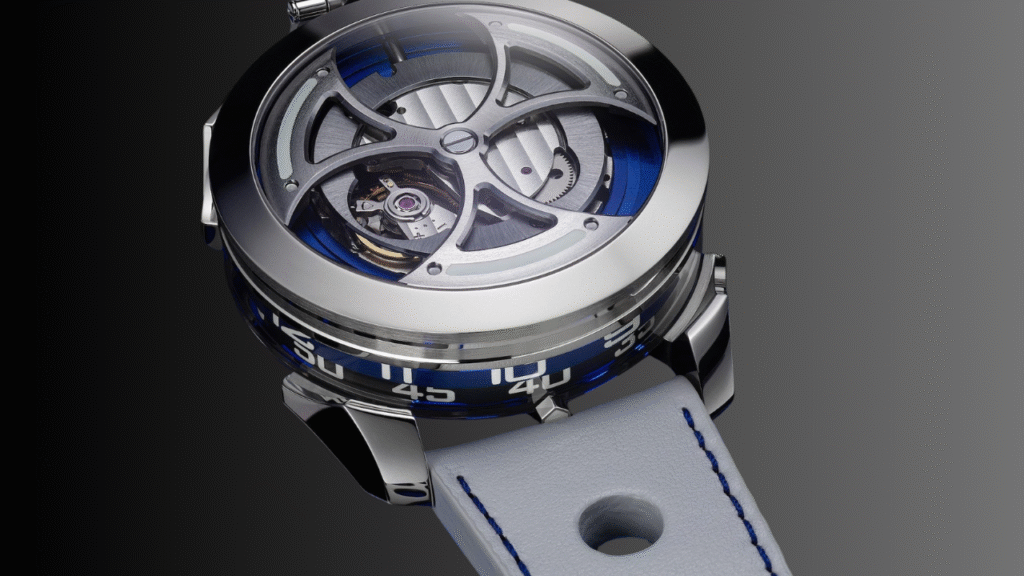
A cornerstone of Citizen’s success is its in-house movement manufacturing, especially through Miyota. Established in 1959, Miyota (a Citizen subsidiary) focused on mechanical and quartz movements. By 1986 Miyota had become the world’s largest movement maker, and by 2005 had produced over 3.5 billion of its ubiquitous 2035 quartz calibers. In effect, Miyota movements are made “every second,” supplying countless Citizen watches and many other brands worldwide.
Miyota also continued to innovate. In 2010 it unveiled the UHF 262 kHz quartz movement (Caliber 0100 technology) which oscillates at 262,144 Hz – about 50 times higher than standard quartz – giving accuracy of about ±10 seconds per year. This movement laid the groundwork for Citizen’s next breakthrough: the Caliber 0100 Eco-Drive (introduced in 2019), a solar-powered ultra-quartz that clocks in at ±1 second per year – the world’s most accurate watch movement. These high-frequency technologies demonstrate Citizen’s long-running emphasis on precision.
Eco-Drive & Sustainability
Eco-Drive remains Citizen’s flagship innovation and one of the most efficient light-powered watch systems globally. After the 1976 prototype, Citizen’s team rapidly improved the technology. By the 1980s Eco-Drive watches could reliably recharge from both sunlight and indoor light. The 1995 Eco-Drive watches (with Li-ion cells) offered practical multi-year reserves. Today Eco-Drive models power a large share of Citizen’s lineup, from entry-level to high-end, including the ultra-thin Eco-Drive One (2016) and Atomic-Time Sync watches.
Ecological impact is often highlighted: by eliminating disposable batteries, Citizen reported that Eco-Drive saved millions of batteries each year. For instance, the company estimated it had kept 10 million watch batteries from landfills in North America by 2007[21]. The Eco-Drive concept – “light-energy, clean-time” – aligns with Citizen’s broader philosophy of responsible innovation.
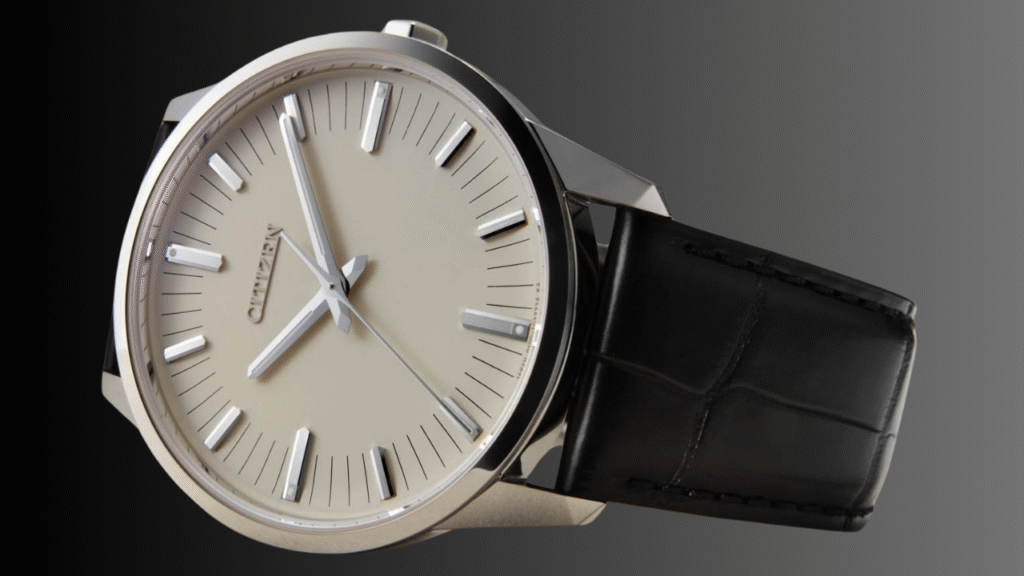
High-End and Haute Horlogerie
Although long known for value and technology, Citizen has occasionally ventured into high-end mechanical and luxury timepieces. In 2017 Citizen unveiled its first tourbillon watch, the Tourbillon Y01, a very limited 18k gold model made to mark the 300th anniversary of the Japanese department store Daimaru. Hand-assembled in Japan (despite Citizen owning Swiss makers Arnold & Son and La Joux-Perret), the Y01’s Cal. M001-Y01 movement features a 100-hour power reserve and fine finishing.
In 2021 Citizen launched The CITIZEN series with the in-house Caliber 0200 automatic movement. Created in collaboration with Swiss specialist La Joux-Perret (acquired by Citizen in 2012), Cal.0200 is a chronometer-grade automatic with a free-sprung balance and exquisitely finished bridges – rivalling luxury benchmarks like Grand Seiko. This “luxury sports” watch line (refs. NC0200) showcases Citizen’s commitment to haute horology, with crisp case design and open-worked dials that highlight the movement’s craftsmanship.
Citizen also maintains upscale lines such as Campanola (a sub-brand known for high complications and enamel dials, launched in 2000) and Exceed/The Citizen, which offer elegant chronometers and advanced materials (titanium, Duratect coatings, etc.). These endeavors, while few compared to Citizen’s mass-market core, demonstrate the brand’s versatility – “from automated mass production to the finest manufacture”.
Radio, GPS and Smart Timekeeping
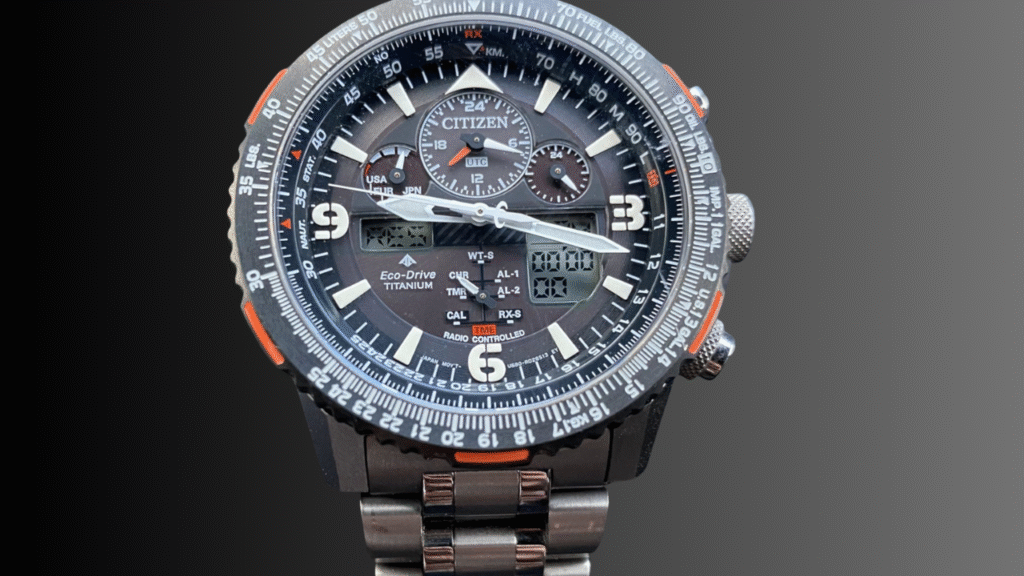
Citizen has continually embraced new timekeeping signals. In 1993 the brand released the first multi-band radio-controlled watch, enabling automatic setting to atomic clock signals from Europe, Japan and North America. In 2011 Citizen pioneered the Satellite Wave watch: the first light-powered watch to synchronize with GPS satellites in orbit. These Satellite Wave models capture time signals from GPS for worldwide accuracy, even in remote areas. The 2014 Satellite Wave F100 set a record for fastest analog satellite reception (3–5 seconds).
Building on this, Citizen’s latest Satellite Wave X models (2024) refine the concept. Debuting for the 10th anniversary of the F100, the new Satellite Wave X watches boast a fast 3-second GPS time-sync (world’s fastest for analog watches) and monthly accuracy of ±5 seconds without signal. These high-tech watches combine scratch-resistant Super Titanium™ cases with the latest Caliber F150 satellite/GPS movement and Eco-Drive power. They illustrate Citizen’s modern focus: “a streamlined design inspired by satellites in space” and extreme timekeeping precision.
Miyota: Movements for the World
Citizen’s subsidiary Miyota has made the brand’s movements ubiquitous in the watch industry. Miyota mechanical calibers (like the 8215, 9015, 9016) are used in mid-range automatics globally, prized for their reliability. Its mass-produced quartz calibers (2035, 157 etc.) power millions of watches. The vertical integration (movements made in-house) gives Citizen cost advantages and quality control over its entire product range. As a result, Citizen can offer everything from sub-$200 quartz pieces to high-end chronographs under one corporate umbrella.
Global Reach and Corporate Profile
Citizen Watch is headquartered in Nishitōkyō, Tokyo, and operates in over 140 countries worldwide. The group encompasses six major brands: Citizen, Bulova, Arnold & Son, Frédérique Constant, Alpina, and Campanola. Over the years Citizen has grown through strategic acquisitions. In 2008 it acquired Bulova (USA) and its subsidiary Wittnauer, strengthening its presence in the $200–$600 segment. In 2012 it bought the Swiss Prothor group (owner of La Joux-Perret and Arnold & Son). In 2016 it acquired Frederique Constant SA (including FC, Alpina and Ateliers deMonaco). These moves made Citizen a true horological conglomerate, from accessible sport watches to high-complication Swiss luxury under one roof.
Citizen’s current CEO (as of 2025) is Yoshitaka Oji, who succeeded Toshihiko Sato on April 1, 2025. The change reflects Citizen’s focus on continued growth; the company’s board cited the need to “advance the growth strategy of the Watches business” under a new leader. Despite its global reach, Citizen remains proud of its origins: the name “Citizen” and its guiding principle of “Better Starts Now” – the idea that improvement can begin in the present – encapsulate Yamazaki’s original vision for the company.
Innovations and Milestones
Over more than a century, Citizen has achieved countless “firsts” in watchmaking. A few highlights include:
- 1976: Crystron Solar Cell – the world’s first solar-powered analog quartz wristwatch.
- 1993: First multi-band atomic radio watch with global synchronization.
- 2011: Eco-Drive Satellite Wave – first solar wristwatch with GPS satellite time reception.
- 2016: Eco-Drive One – world’s thinnest light-powered watch (1.00 mm movement thickness).
- 2017: Promaster Professional Diver 1000m – first solar-powered watch rated to 1,000 meters (saturation diving).
- 2018: Caliber 0100 Eco-Drive – first watch accurate to ±1 second per year.
- 2021: The Citizen Caliber 0200 – new in-house mechanical chronometer-grade movement with free-sprung balance.
Each of these breakthroughs is supported by product families that range from daily wear to professional instruments. For example, the Promaster line has produced record-breaking divers (1300m, 1000m, depth-sensing Aqualand models) and pilots’ watches (Navihawk with 40-city chronograph, Skyhawk A-T with atomic sync). The Exceed line includes ultra-thin and luxury quartz models, some harnessing Eco-Drive technology. And of course, hundreds of fashion and casual models (with names like Nighthawk, Chandler, or simple numeric series) have made Citizen a household name worldwide.
Citizen Today (2025 and Beyond)
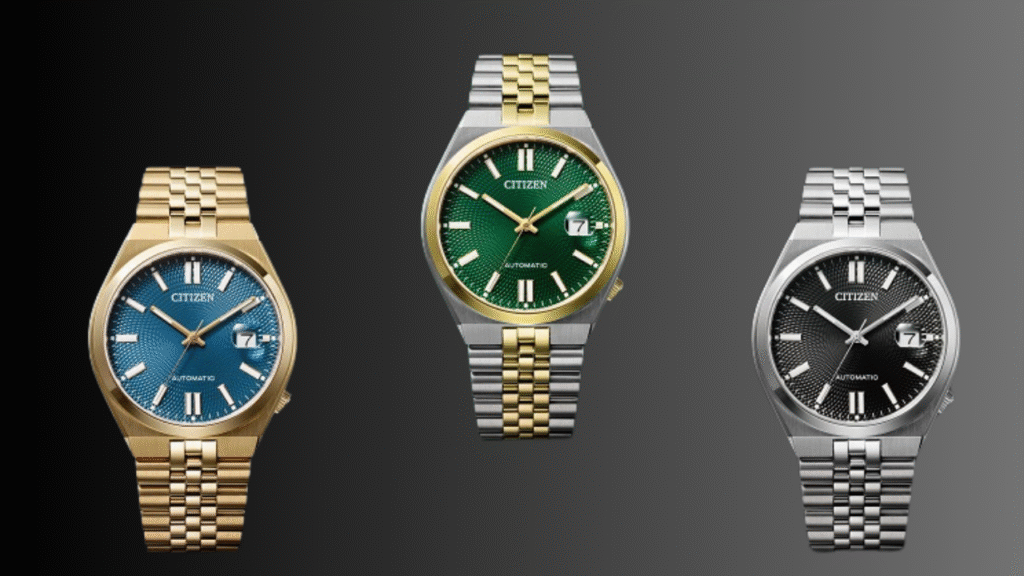
As of 2025, Citizen is a true industrial juggernaut in the watch world. Its extensive R&D centers continue to refine both quartz and mechanical technologies. For instance, Citizen’s engineers are working on even faster time-signal reception, improved satellite navigation (GPS), and next-generation materials (e.g. new Super Titanium™ coatings). On the mechanical side, Citizen has signaled that it will expand The Citizen luxury sports collection and other haute models, leveraging its Swiss component makers.
At the same time, Citizen emphasizes sustainability. In 2022 it launched a new environmental action plan across its global operations, focusing on reducing carbon footprints and promoting recycling – in line with its early commitment to battery-free watches. The brand’s ubiquitous Eco-Drive remains a symbol of this eco-conscious approach.
Citizen’s impact goes beyond products. The company runs the “Citizen of the Year” award in Japan (since 1990) to honor social contributions, reflecting Yamazaki’s idea that a watchmaker is serving the people. Citizen also sponsors events in sport (timing equipment) and supports crafts and innovation in horology.